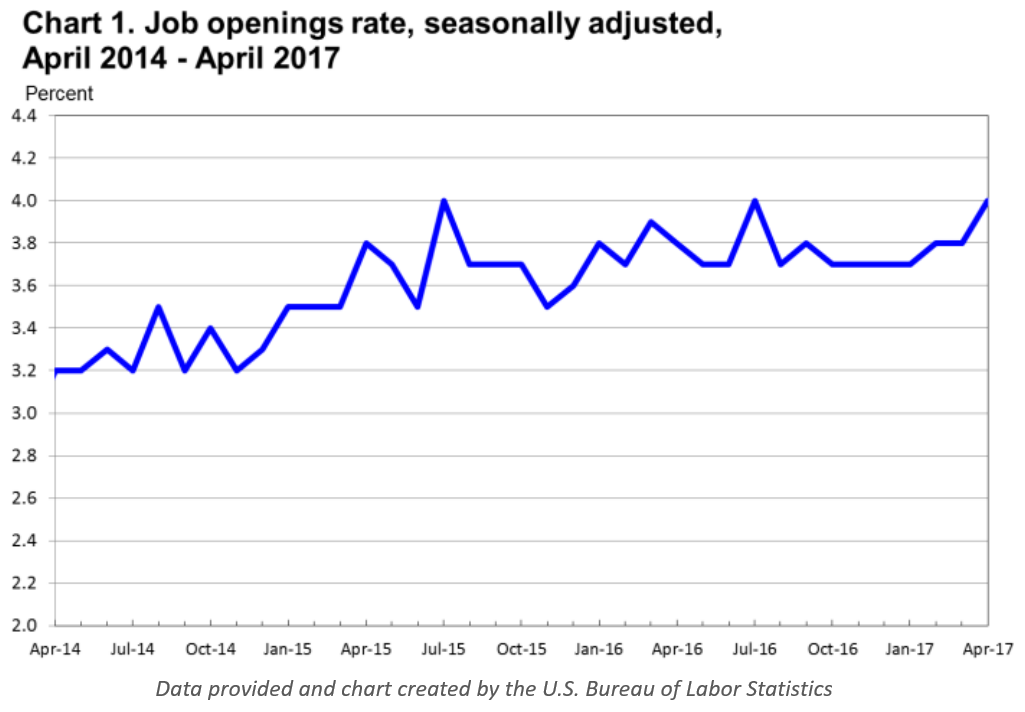JOLTS! It may sound like the latest dance craze, but it is in fact one of the most helpful surveys put out every month by the U.S. Bureau of Labor Statistics. The JOLTS survey, which stands for Job Openings and Labor Turnover Survey, quantifies job openings, hires, and separations for businesses across the country. These are collected through a stratified random sample carried out monthly.
What does JOLTS tell us about the labor market?
The JOLTS data takes a look at a few key data points relevant to the labor market. First, job openings are reported as a total number for the nation as well as within industry classifications. For example, for each month, a user can see how many jobs are available where the employer is actively searching for someone to work in that position and is willing to have someone start in 30 days or less. This includes full-time job openings, as well as openings for part-time, seasonal, short-term, and permanent openings.
Next, additions to payroll by employers during the month (also including full-time, part-time, etc. employees) are collected as “hires”. These are only employees brought on to the company, and is not those transferred or promoted within the company.
Finally, “separations” are the number of employees that a firm has terminated, either because of a quit, a layoff, a discharge, or another separation. A layoff or a discharge originate with the employer, and can be due to mergers and restructuring, or perhaps due to firing as well. Another example, such as a retirement, would be classified as another separation. More notes on all of these are available on the BLS website.
How many job openings are there right now?
The most recent data available shows that there are currently just over 6 million job openings in the United States in April 2017, including almost 5.5 million in the private sector and about 580,000 in government positions. This total number of job openings is an increase from the 5.6 million seen in April 2016.

Industries with notable job opening rates (the number of job openings divided by the number of employees in that industry) are Other services (with a job opening rate of 5.8%), Professional and business services (5.2%), and Leisure and hospitality (5.1%). Leading all industries in the number of job openings is Professional and business services employers which had 1,134,000 job openings in April 2016. Close behind with 1,112,000 job openings is Education and health services. This total is the result of just under 100,000 job openings in Education but over 1.0 million in Health care and social assistance.
What can I do with this information?
JOLTS data, and specifically job openings rates, are always available at the BLS website and are updated monthly. Although only consistently available on a national level, the job openings time series is a great way to see the change in talent demand over time. Additionally, looking at the industry job openings rates can provide context and perhaps a benchmark for individual employers when it comes to tracking their own turnover and current openings.
It is also worth noting that several states either consistently or as a point-in-time sample collect job vacancy data, including a report released by the State of Michigan’s Bureau of Labor Market Information and Strategic Initiatives in late 2015.


